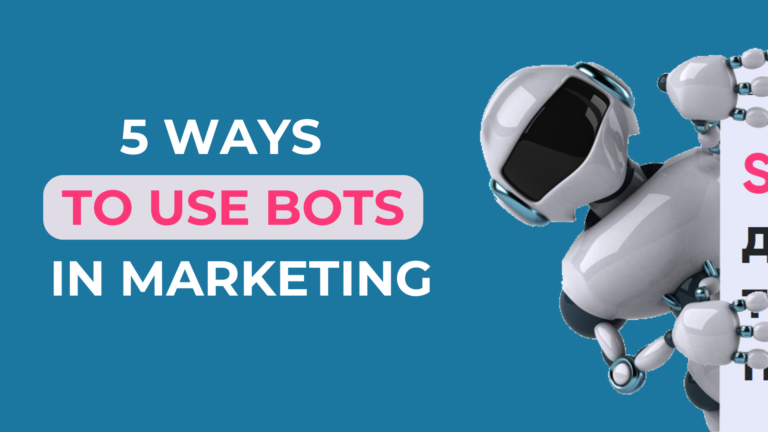Date of publication:
26 Jan. 24How To Build A Strong Brand
In an increasingly competitive business world, building a strong brand is key to a company’s success. Especially in oversaturated markets where the supply of goods and services exceeds demand, it is essential to stand out from the crowd and become visible to consumers.
The importance of a strong brand in an oversaturated marketplace
The importance of a strong brand in an oversaturated marketplace goes beyond the mere recognisability of a logo or company name. It becomes a powerful tool that helps a company overcome competition and succeed in this environment. Here are some key aspects of the importance of a strong brand in an oversaturated market:
- Differentiation from competitors. In an oversaturated market, hundreds or even thousands of companies may offer similar products and services. A strong brand allows your company to stand out from the crowd, create a unique perception and become an attractive choice for consumers.
- Increased trust and recognition. Customers tend to focus on familiar brands, because they are associated with reliability and quality. A strong brand builds trust with users, which makes it easier to overcome barriers to purchase and persuades them to choose your product or service.
- Incentivise customer loyalty. Brands that people feel attached to are more likely to retain loyalty even in the face of stiff competition. Loyal users are often willing to pay more and recommend your brand to their acquaintances, which boosts sales and spreads a positive reputation.
- Creating emotional appeal. Strong brands tend to evoke emotional responses from customers. A brand that knows how to attract and evoke positive emotions is easier to remember and creates a deeper connection with its audience.
- Resilience in times of crisis. When the market is saturated and demand declines, companies without strong brands are more vulnerable to crisis situations. A strong brand can act as an ‘insurance policy’, helping a company to weather tough times and even use them to its advantage, for example by increasing market share or driving users away from weaker competitors.
- Attracting talent and partners. In addition to attracting customers, a strong brand plays the role of a unique identifier for a company that helps it stand out, attract and retain customers, increase trust and loyalty, and withstand fierce competition. It is important to invest in building and maintaining a strong brand to ensure the long-term success of a company in a saturated market.
How to analyse the market and identify the unique features of a product or service
An important step in building a strong brand in an oversaturated market. A few steps to address the issue:
- Competitor Research. Start by analysing competitors who already provide similar products or services in the market. Research their products, prices, marketing and positioning. Identify their strengths and weaknesses to see how your product can stand out and attract attention.
- Identify your target audience. Understanding your target audience is key to identifying your product’s unique features. Determine who your target audience is and research their needs, preferences, concerns and expectations of the product or service.
- SWOT Analysis. Conduct a SWOT analysis of your company and products. Identify your brand’s strengths, weaknesses, growth opportunities and threats facing your business. This will help identify unique advantages and factors that you can use in your strategy.
- Trend research. Keep up to date with the latest trends in the industry. Study the latest technologies, customer tastes and needs, and changes in consumer behaviour. This will help you understand what unique features may be in demand and appealing to your target audience.
- Unique Selling Proposition (USP). Define your unique proposition – what makes your product or service different from others in the market. This could be related to quality, functionality, design, price, delivery method, or anything else that will catch customers’ attention.
- Conduct customer interviews and feedback. Interview existing customers to understand what they value about your product or service and what can be improved.
Once the market has been analysed and the unique characteristics of the product or service have been identified, it is appropriate to use this data to develop a branding and marketing strategy. It will be necessary to ensure that communication emphasises these unique characteristics in order to attract and retain consumer attention in an oversaturated market.
The importance of market research and understanding the target audience
Market research and understanding your target audience are fundamental components of a successful strategy to build a strong brand in an oversaturated market. These aspects are critical:
- Defining uniqueness and positioning. Market research helps to identify the competitive space and determine what unique set of characteristics a product or service can offer to differentiate itself from other players in the market. Understanding the needs and preferences of the target audience allows you to focus on the key product features that will be most appealing to the target audience.
- Creating a point marketing strategy. By knowing your target audience, you can more effectively determine how to reach them exactly where they are. You can tailor your marketing efforts and communications to better suit the interests and needs of your target audience.
- Improving your product or service. Market research and feedback from your audience helps you identify the strengths and weaknesses of your product or service. Understanding customer needs allows you to improve your product, add needed features or customise it to meet market demands, which in turn improves your brand’s overall competitiveness.
- Risk reduction. Market research allows you to identify potential risks and challenges your brand may face in an oversaturated market. Understanding your target audience helps you avoid potential mistakes in product development or marketing strategy, which reduces the likelihood of a failed investment.
- Risk mitigation. Market research identifies potential risks and challenges your brand may face in an oversaturated market. Understanding your target audience helps you avoid potential pitfalls in product development or marketing strategy, reducing the likelihood of failed investments.
Continuous development and innovation. Knowing your customers’ needs and expectations allows you to stay relevant and relevant in the marketplace.
In summary, market research and understanding your target audience is a critical part of a strategy for building a strong brand. These actions help to better understand the market and customers, develop more targeted marketing strategies and products, mitigate risk and strengthen the connection with the audience, which contributes to a company’s sustained success in an oversaturated marketplace.
What research methods can be used to analyse the market and customer needs
The choice of specific methods depends on the objectives and budget of the study, as well as the resources available.
Basic methods of market and customer needs research:
- Survey. The most common method of collecting information. It can be conducted either in the form of face-to-face interviews or through an online survey. Surveys allow asking standardised questions and obtaining structured data.
- Focus groups. Group discussions with representatives of the target audience. Allows to find out participants’ opinion about a product, service or brand, as well as to identify their needs and preferences.
- Interviews. Face-to-face conversations with members of the target audience. Allows you to gain a deeper understanding and learn details that may be missed in surveys.
- Observation. Observing consumer behaviour in-store, online or at events can provide valuable information about their preferences and needs.
Sales data analysis Examining sales data for a product or service helps you understand which products or services are most in demand. - Secret shoppers (mystery shopping). Hire people to act as regular customers and evaluate service quality, sales processes, and overall customer experience.
- Competitor Analysis. Studying competitors’ strategies and tactics, products and positioning can provide insight into market trends and allow you to identify your unique advantages.
- Analysing social media data. Monitoring discussions and reviews about a company or product on social media can help you understand audience opinion and identify problems or suggestions for improvement.
- Analysing customer feedback. Examining customer reviews left on a website
Combining several research methods usually provides a complete picture of the market and customer needs. This is how an accurate and successful branding and marketing strategy is formed in an oversaturated market.
How to ensure a high quality product or service
We have highlighted a few key ways to ensure a high quality product or service.
- Research and development. Invest in research and development of new products or services. A thorough analysis of the market and customer needs will help you determine what your audience needs and develop products or services that meet those needs.
- Quality Standards. Set strict quality standards for your product or service. Train your staff to meet these standards and ensure that they are adhered to at all stages of production or service delivery.
- Quality Control. Implement a quality control system that will inspect products or services at all stages of production or service delivery. This will allow possible defects and deficiencies to be identified and corrected before they reach the customer.
- Customer Feedback. Actively collect feedback from customers about the quality of the product or service. Take into account their opinions and suggestions for continuous improvement and betterment.
- Staff training. Invest in staff training so that they are competent and knowledgeable in providing high quality customer service.
- Use of high quality materials and resources. Prioritise quality materials and resources when manufacturing products or providing services. This will increase the reliability and durability of your product or service. The quality of materials and components affects the quality of the final product or service.
- Product Testing. Conduct thorough testing of new products before they are released to the market. This will help identify potential problems and ensure that the products meet claims
A constant focus on quality and a commitment to improvement will help build a reputation as a reliable, high quality brand that will attract and retain loyal customers in an oversaturated market.
The importance of marketing strategy in building a strong brand
A brand is not just a logo and a name, it is a holistic image that evokes emotions and associations in consumers. An effective marketing strategy allows you to stand out from the crowd of competitors and create a unique offer that will attract the attention and loyalty of the target audience.
The key objective of a marketing strategy when building a brand is to create a clear and unique image that reflects the company’s values, mission and uniqueness. A strong brand should communicate with customers not only about products or services, but also about what is behind these products – philosophy, history, attitude to customers.
Marketing strategy also comes into play:
- Target Audience Shaping. Understanding who the key target audience is allows you to create more accurate and personalised messages and campaigns that resonate with their needs and preferences.
- Communication and promotion. Methods of communicating with audiences and methods of brand promotion are identified. Effective communication helps establish an emotional connection with customers, and successful promotion helps attract new customers and retain existing ones.
- Customer loyalty is one of the most important elements of a successful brand. Effective marketing actions encourage repeat purchases, brand recommendations and retention of loyal customers.
- Competitive advantage – allows you to highlight competitive advantages and demonstrate them to consumers. Strong marketing efforts can help convince customers to choose your brand over your competitors.
- Results Orientation. Clearly defined marketing goals and success metrics are about achieving specific results and measuring the effectiveness of marketing efforts.
An equally important aspect is to support and strengthen the brand in the long term. The marketing strategy should provide for constant interaction with the audience, creation of valuable content materials, holding interesting promotions and events. This helps to keep customers interested and engaged, strengthening their commitment to the brand.
Why continuous development and innovation is essential for a brand in a competitive marketplace
In today’s oversaturated marketplace, continuous development becomes a necessity for successful brand building and strengthening. Staticity and lack of innovation can lead to loss of customer interest and concession to competitors. Continuous development allows a brand to remain relevant, attract the attention of the audience and adapt to changing customer demands and tastes.
The key role of continuous development is:
- Stable innovation and competitiveness. This means constantly introducing new technologies, improving products and services, and developing new approaches to communicating with customers. This approach not only strengthens the current market position, but also opens up new opportunities for business growth and expansion.
- Adapting to technological change. Technology is evolving rapidly and brands that don’t keep up can be left behind. Innovation allows you to adapt to new technologies and use them to improve your business processes and products.
- Attracting new customers. Innovative products or services attract the attention of new customers who are looking for innovative solutions and modern technology. Brands that offer something unique and interesting usually attract more new users.
- Response to competition. Competition in the market can be fierce and innovation allows a brand to respond quickly to competitors. Continuous development allows the brand to stay competitive and not lose market share.
- Ensuring long-term success. Brands that stop there and don’t keep up with change risk becoming obsolete and losing market share. Continuous development and innovation contribute to long-term success and brand sustainability.
Conclusion
In general, continuous development is a fundamental aspect of building a strong brand in an oversaturated market. It allows the brand to remain relevant, attractive and competitive, creating conditions for sustainable growth and successful adaptation to change.
What all these aspects have in common is an active focus on customers and their needs, and a desire to offer something unique and valuable. The combination of these factors will help to build a strong and successful brand even in an oversaturated market.



